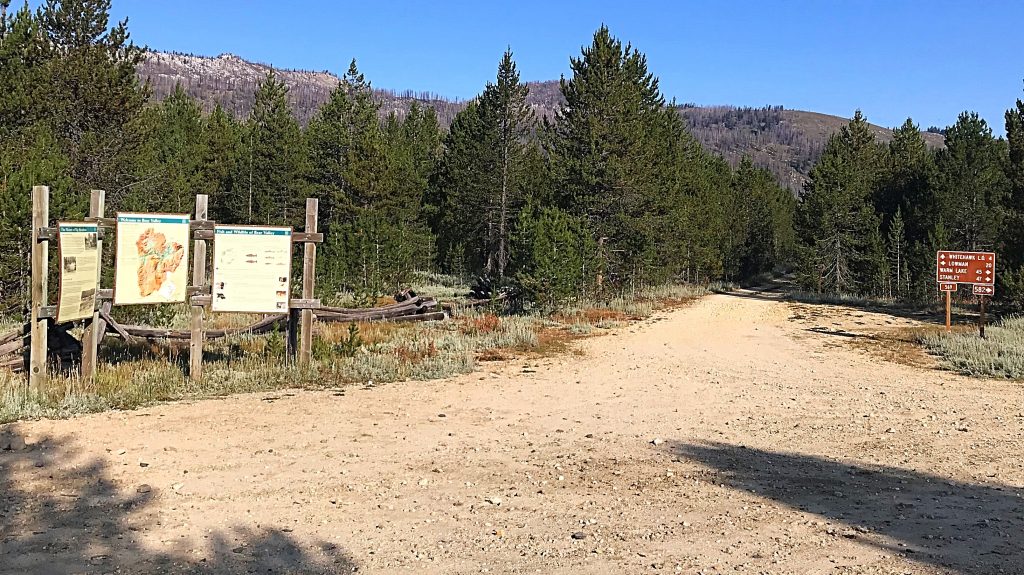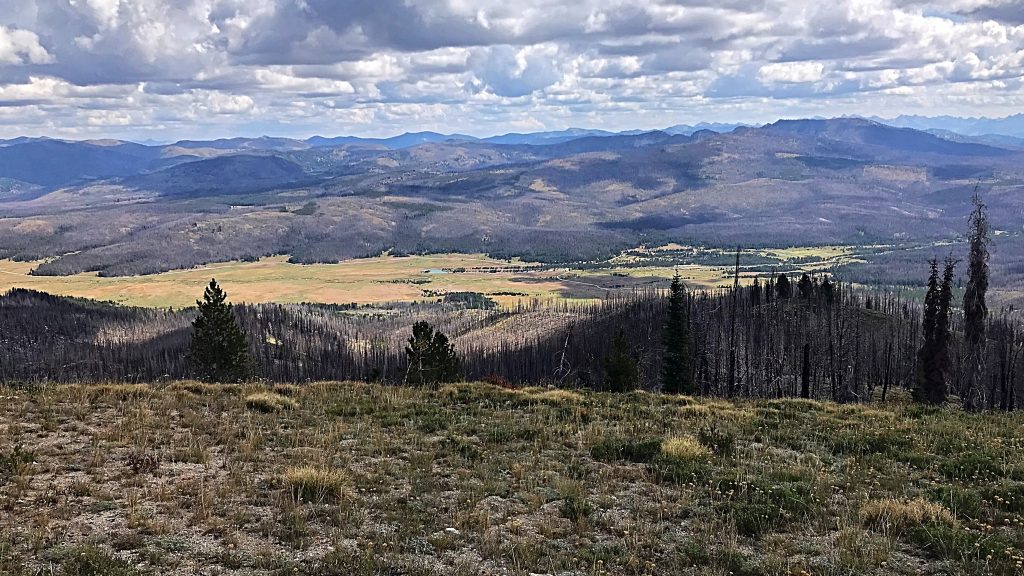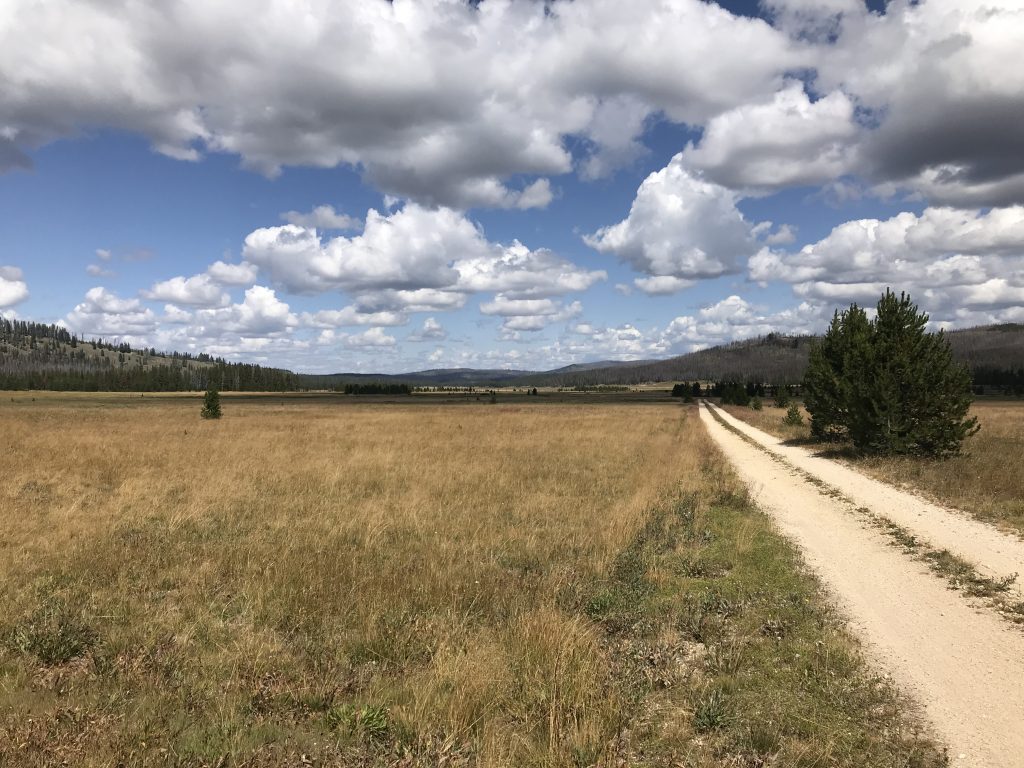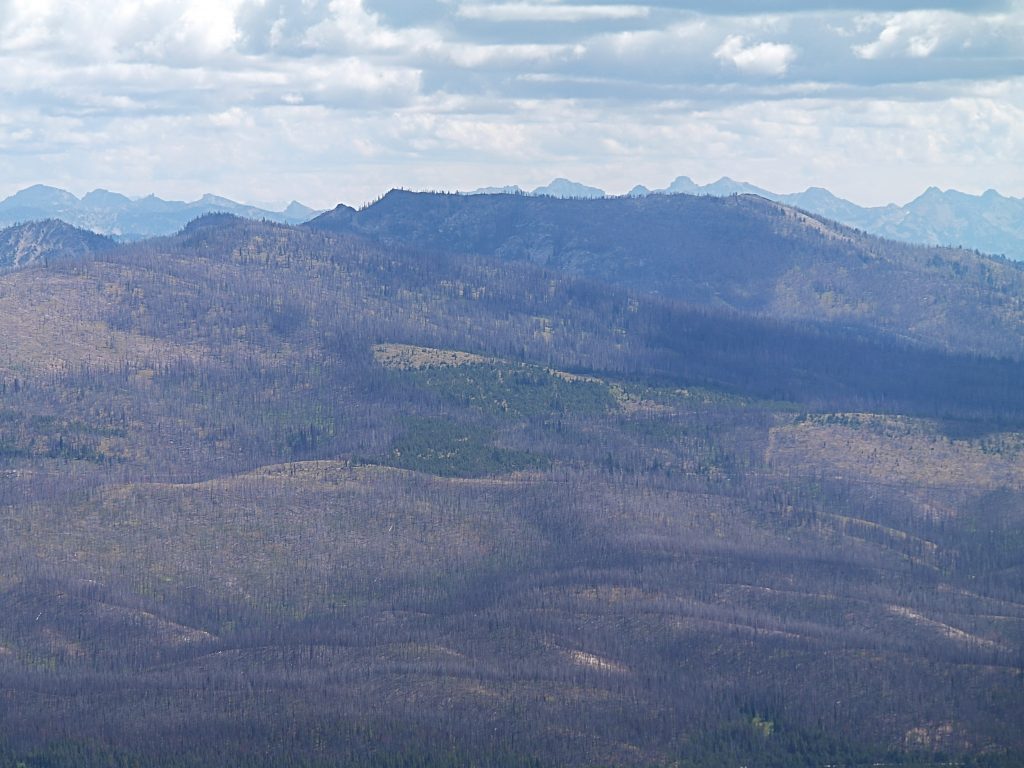The following history is found on a display in Big Meadows.
Mining
In 1955, an unusual sight appeared in Big Meadows. An enormous dredge began excavating black sands from Big Meadows. No, it wasn’t gold the miners were after. Bear Valley Creek contains a radioactive combination of rare earth and metallic elements crucial to the country’s strategic defense industries. This combination is one of the largest known deposits in the world.
During World War ll, the US. Government realized that it could not rely on foreign countries for the materials used in industrial metals and nuclear energy research. To stimulate domestic exploration, Congress passed the Defense Minerals Economic Act which guaranteed federal purchases of columbium—tantalum ores at twice their current values.
By 1958, dredging in Big Meadows produced 99% of the columbium—tantalum output in the United States. Columbium-tantalum ores are used in the construction of nuclear power plants, jet engine and pipeline steels, and radar and military radio communications. The operation also recovered rare earth minerals containing valuable nuclear fuels such as uranium and thorium. Dredging stopped in 1959 after the government discontinued its purchase program.
Mining drastically changed this stretch of Bear Valley Creek and, in the process, destroyed critical salmon and steelhead spawning habitat. During the 1980s, the Bonneville Power Administration, Shoshone-Bannock Tribes, Idaho Department of Fish and Game, U.S. Fish and Wildlife Service and US. Forest Service successfully restored the spawning grounds of Chinook salmon and steelhead in Bear Valley.
A Day in the Life of a Ranger
In 1905, President Roosevelt included Bear Valley in the Sawtooth Forest Reserve. Local ranchers wanted Forest Service protection from non-resident stockmen. However, minor range wars continued to erupt in Bear Valley. In 1907, Forest Service guard L. L. Hammer arrived in Big Meadows to resolve a standoff between ldaho and Wyoming sheep outfits. The ranchers were armed with Winchester rifles and barricaded on opposite sides of the meadow. Hammer later remembered, “The Wyoming boss was a big ruffian fellow who promised to whip me if l interfered too much.” Fortunately, he settled the dispute peacefully! In the early years, rangers had to purchase their own horses, gear and uniforms for the job. These supplies cost half of a ranger’s $1,200 annual salary. Guards made even less, so many quit because they could not afford to work for the Forest Service. The agency could not compete with the $3.50 daily wage paid by the mining and logging industries.
The Big Meadow Ranger Station was established in 1915 to help manage grazing in Bear Valley. It was a tough job. During World War I, Chicago meatpackers loaned money to stockmen to increase the size of their bands. In 1918 alone, woolgrowers trailed over 200,000 sheep from Oregon and Nevada through Bear Valley. They were headed for uncontrolled grazing lands in the wild and lawless Thunder Mountain Mining District located in the Salmon River Country. Overgrazing, murder and a spectacular fire at Thunder Mountain finally convinced Congress to give the Forest Service control of the area in 1919. Today, the Frank Church River of No Return Wilderness encompasses portions of the old mining district.



